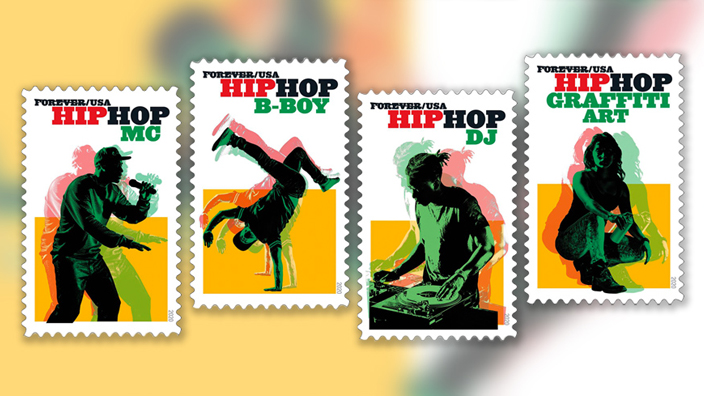Hip-hop was born in the streets of New York City during the 1970s, but it didn’t stay there.
By the early ’80s, the music, art and dance movement — which the Postal Service will honor with new stamps this week — was gaining widespread popularity.
In 1984, MTV showed its first rap video: Run-D.M.C.’s “Rock Box.”
Two years later, Coca-Cola became the first national brand to use hip-hop in advertising when rapper Kurtis Blow appeared in a Sprite commercial.
By the end of the decade, the Grammys had introduced a best rap performance category. The first honorees: DJ Jazzy Jeff & the Fresh Prince for “Parents Just Don’t Understand.”
As hip-hop moved from the streets to the recording studio and onto radio and TV airwaves, the genre evolved.
Powerful critiques of issues like racism, poverty and police brutality found new audiences far beyond urban communities. Over time, however, the most radio-friendly songs and artists focused fewer of their lyrics on society’s ills, relegating political voices to the hip-hop underground.
Music production changed as well.
DJs’ live performance style evolved into recorded techniques such as sampling, which became a collage-like art of manipulating and rearranging prerecorded sounds.
During the next several decades, hip-hop grew into a global musical and cultural force, producing icons like LL Cool J, who became the first hip-hop artist to receive the Kennedy Center Honors, in 2017.
Socially conscious community leaders and artists now dedicate their energy to educating and preserving the four elements of hip-hop — DJing, rapping, break dancing and graffiti art. Understanding the movement’s roots has become a defining part of the culture itself, so much so that this knowledge is now widely regarded as hip-hop’s fifth component.
Hip-hop has also influenced countless other genres of music, including rhythm and blues, pop, jazz and country.
Its growth and impact have not been without controversy, but its creativity remains powerful.
Hip-hop has forever changed the way worldwide popular music is made — and what it sounds like.
This is the second of two articles on the history of hip-hop. A look at the movement’s early days was published yesterday.


